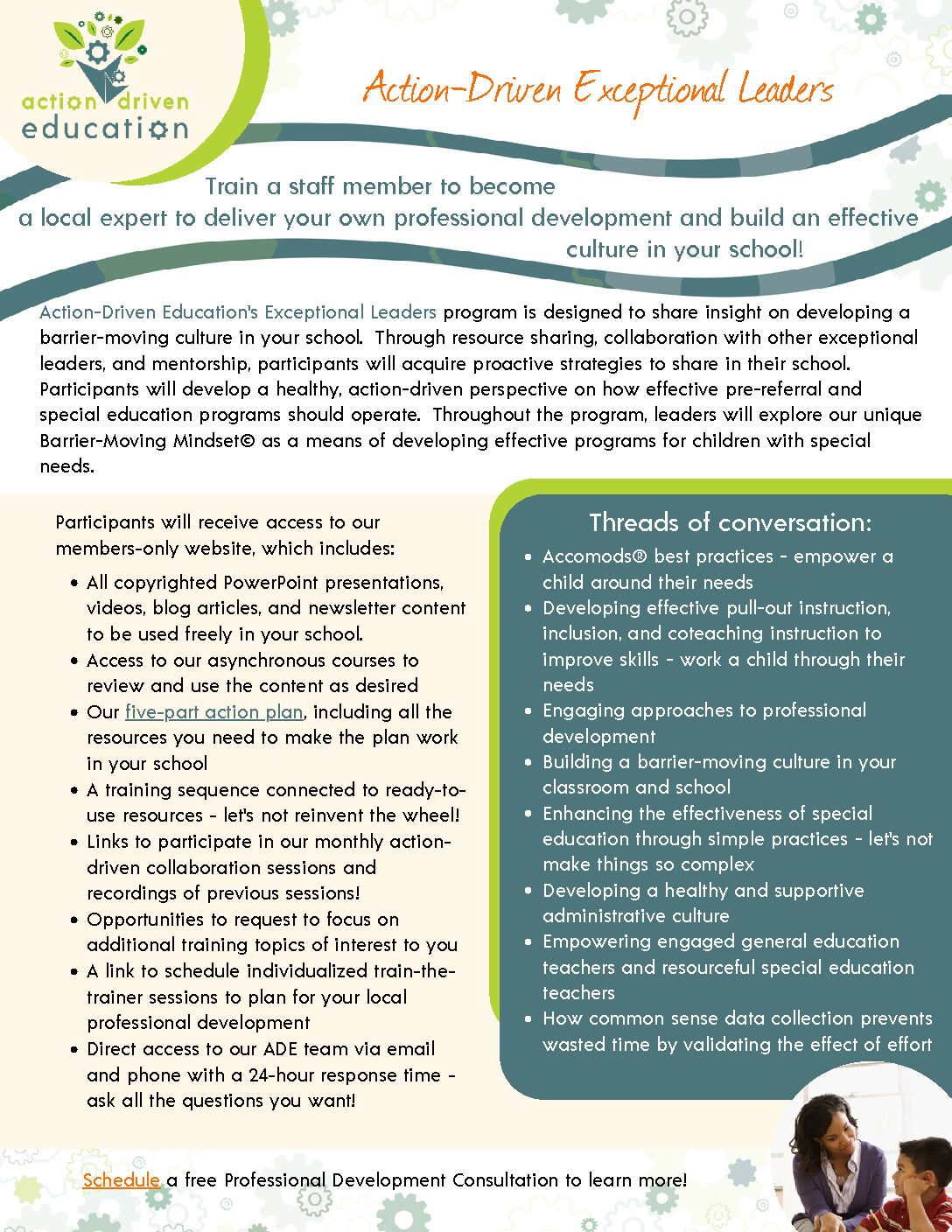Exceptional Leader Resources
- Our Action-Driven Exceptional Leaders Program is designed to give you everything you need to lead an effective program in your school.
- Build a local expert that’s highly trained in our Through-and-Around Process.
- Equip your school with a healthy culture
- Be prepared to answer questions with practive strategies that get the job done!
- Don’t rely on others to develop and deliver local professional development.
- And much more!
Action-Driven Exceptional Leaders Program

Already a member? Log in below to access your content!
Not a member of our Exceptional Leaders Program? Schedule a free consultation to learn more!
Discover the Tools For Effective Inclusion Presentation Resources
Action-Driven Approach: Step #1
Our action-driven approach begins by building a barrier-moving, inclusive mindset so teachers recognize the value of individualization for the student… and for themselves! (Action Plan I)
During this step, teachers learn to:
-
- Identify that a student has a barrier (need) that is standing in their way in the classroom
- Define the need in clear and observable terms
- Recognize places where the need is impacting the child’s ability to become meaningfully engaged in the class, instruction, and assessment
- Collect data to verify presence
What’s an example of data that prove the presence of the need?
The need itself
- Reading fluency example: a child reads at 40 words per minute
- This becomes through data
How the need impacts the child
- Reading fluency example: the child fails tests (averaging 48%) because they read too slow to comprehend
- This becomes around data
Action-Driven Approach: Step #2
During the second phase of our approach, teachers learn to address the student’s need using a two-tiered, Through-and Around-Process (TAP).
Tier I:
Work the child through their need (Action Plan II)
- Plan instructional opportunities designed specifically to address the child’s need
- Include consideration to rehearse skills as part of differentiated instructional activities
- Include goals in the child’s IEP (if applicable) or IST/MTSS Student Support Plan
- Collect through data to verify progress (Action Plan IV)
What should I be thinking in Tier I?
“How can I design or redesign (Specially Designed Instruction) this learning activity to create an opportunity to improve the child’s skills?”
- Changes to instructional tasks in the inclusive environment that help to improve the skills related to the child’s need
- Pull-out instruction or other direct need-based instruction
- Any opportunity a team can create to build skills related to the child’s need
Tier II:
Support the child around their need (Action Plan III)
-
- Select “just-right” adaptations that eliminate the impact of the need on the child’s ability to learn and demonstrate their learning.
- Collect around data to verify effectiveness (Action Plan V)
What should I be thinking in Tier II?
During a specific activity or class, “Is the child’s need going to present a barrier that could prevent or inhibit their ability to continue to learn or demonstrate their learning?” If so, “How can I empower them around the need?”
- Select adaptations that are aligned with the need and empowered by the child’s strengths
- Adaptations should fit the unique classroom setting
- Just-right adaptations are individualized to the child
